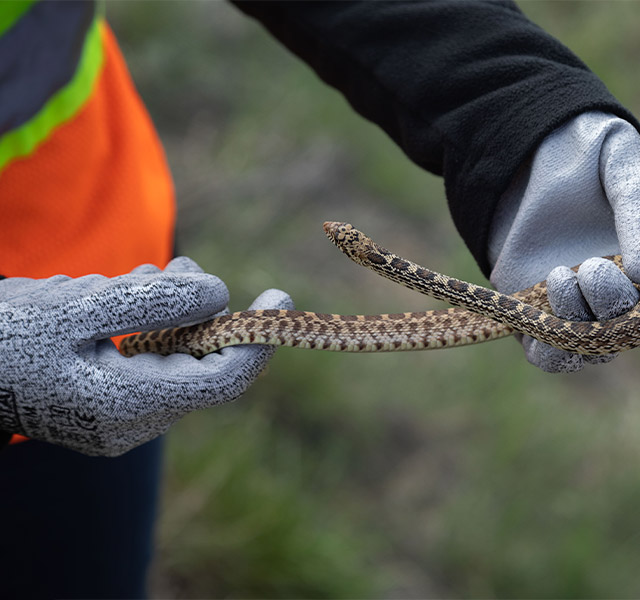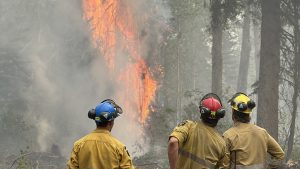As project officials plan out how to snake the Keystone XL pipeline through Alberta, a team of biologists are working to research and protect the slithery serpents that call the region home.
Since last spring, the Keystone XL project team has been conducting snake monitoring research in the province at multiple sites near the pipeline route. In the province, prairie rattlesnakes and other snakes are designated as species of special concern.
While construction in the area hasn’t started yet, the multi-year monitoring program is intended to run from pre-construction through to post-construction. The research, which came after a request from provincial regulators, will help determine if the work impacts the snake population and if mitigation measures are effective.
“The main mitigation is the construction,” said Jennifer Barker, TC Energy’s lead environmental planner for Keystone XL. “We are timing it for when the snakes are in hibernation so they aren’t wandering around getting impacted by machinery or people.”
The team is also implementing speed limits on access roads, erecting fences and having snake handling experts and equipment available to safely remove snakes from dangerous areas if needed.

“Prairie rattlesnakes do not want to get stepped on,” said Barker. “They will let you know they are there and are very gentlemanly.”
According to data from the province, rattlesnake bites are rare and no death from one has ever been recorded.
Last spring, snake experts with AJM Environmental Inc., Keystone XL’s partner on the research, helped build fences and snake hibernacula – or winter snake dens – in the area, to catch snakes coming out of hibernation. Each snake was weighed, measured and examined to determine sex before being tagged with a rice grain-sized transponder under its skin to track when the snake leaves and returns to the hibernacula.
More than 700 snakes were tagged in 2019, 600 of which were rattlesnakes. Other snakes included bullsnakes, wandering garters and plains garters.
In early April the team returned to the sites to capture, measure and weigh the snakes as they left their winter hibernacula for the summer.
So far, they have counted more than 800 snakes.
Once spring monitoring is complete, the team will have a full year of data, establishing baseline numbers for the local snake population that can be tracked.
Barker said the data not only helps the Keystone XL project team and province know if mitigation efforts are working, but it could also help other similar projects going forward.
And the information being gleaned could result in several research papers on Alberta snakes.
“This work comes from a commitment that the company has to put environmental performance, stewardship and protection at the core of what we do,” said Barker. “Everything we do on every project takes into account stewardship of our resources, protection of those resources and environmental performance, and ability to actually measure how are doing.”
Barker stressed that in order to keep doing business and maintain its relationships with government, partners and communities, TC Energy must be measuring and achieving its environmental goals.
Follow the author on Twitter @RussellReports.











Recent Comments
comments for this post are closed